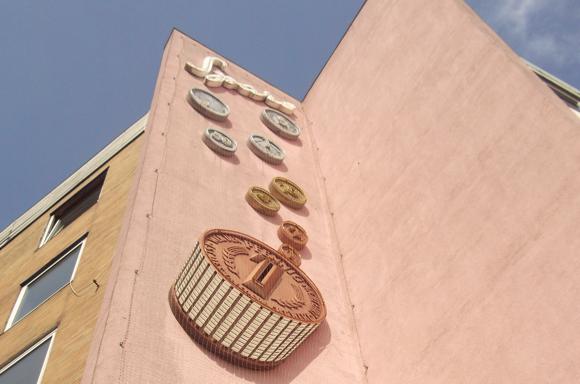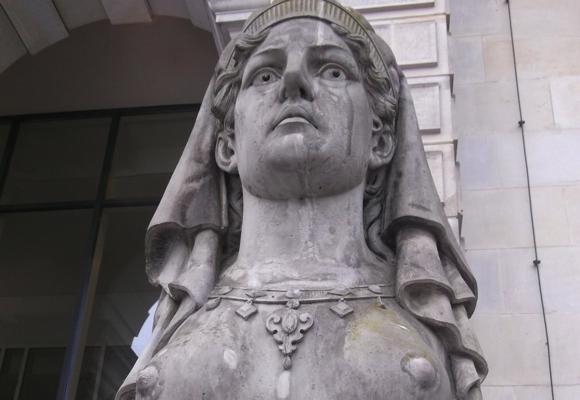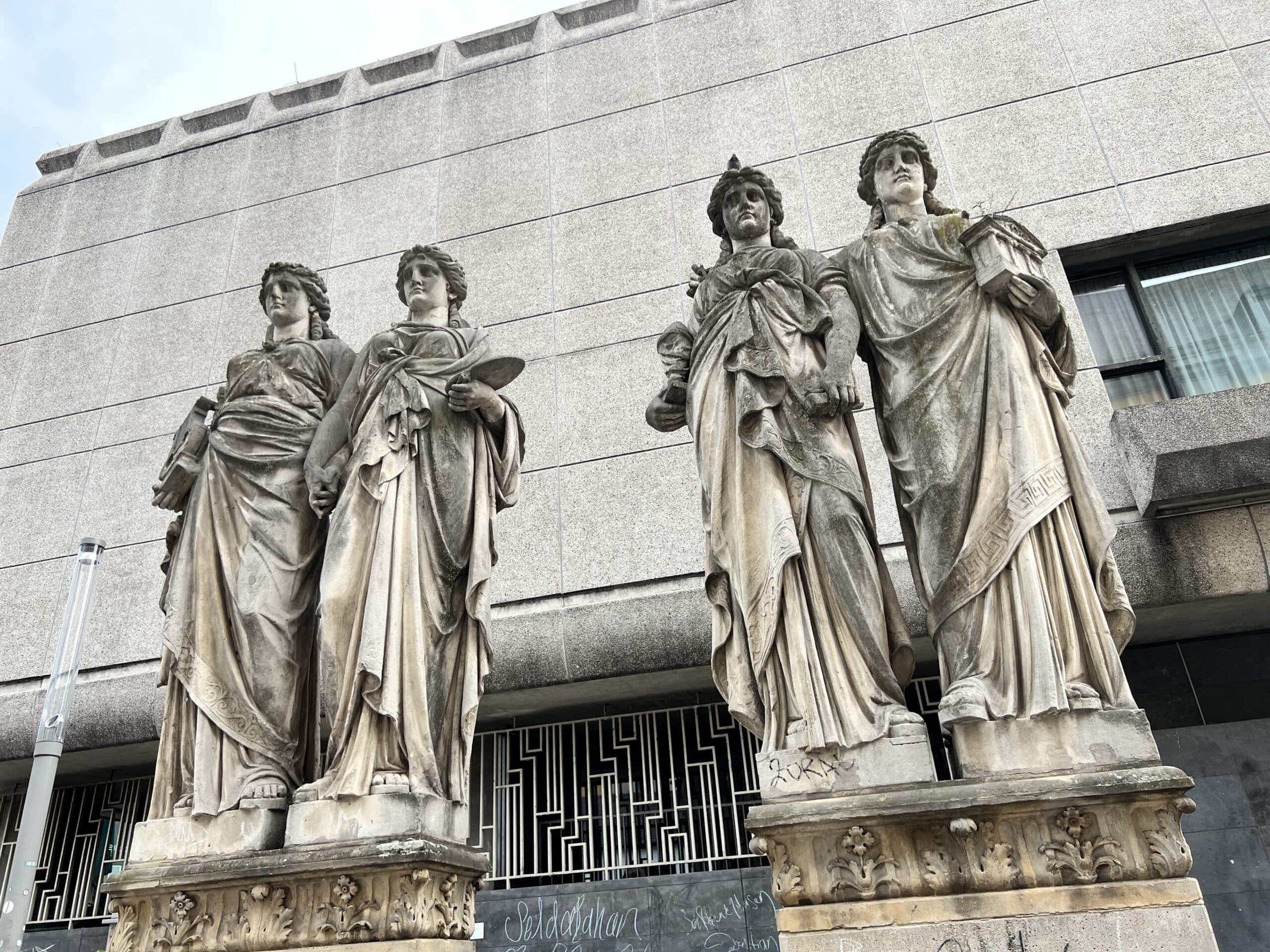Teams, tales and tips – a guide to the local game
Tucked in a far corner of North-Rhine Westphalia, Bielefeld shares the same football passion as its fellow NRW cities towards the Rhine and Ruhr heartland. Unlike Cologne, Dortmund or Gelsenkirchen, however, this textile town has never witnessed the lifting of a major trophy nor welcomed a foreign team in European competition.
This makes it even more notable that flagship club Arminia currently attract average gates of 20,000-plus for a second consecutive season of 3.Liga football, after finishing a miserable 14th in Germany’s third-flight in 2023-24. Moreover, die Blauen sank to this lowly status after two straight relegations, their highest-ever Bundesliga finishes of eighth achieved more than 40 years ago.
For all its growth as an industrialising part of Prussia in the late 1800s, trebling the population almost overnight, Bielefeld was late to embrace football. While many famous teams across Germany sprang from gymnastics clubs, sport was actively discouraged among the social gatherings of the town’s chattering classes. The sons of well-to-do merchants and mill owners had little knowledge of the English game being played in the parks and on the heaths of Braunschweig, Berlin and Hamburg.

In 1904, two members of Bielefeld’s Terpsichore society – named after an Ancient Greek muse of dance, its prime communal activity – were refused permission by the board to form a football section. Chairman Emil Schröder was more open to the idea, however, so he, Dutchman Alwin Bohlen and Jonny Henningsen from Bremerhaven, decided to look for players by placing a small ad in the local newspaper.
First meeting in April 1905 then on May 3, at the Modersohn restaurant in the Town Hall, the soon-to-be founding members agreed to form a football club, again taking its name from classical history. Arminius was the warrior who led local Germanic tribes to victory over three Roman legions in 9 AD. The battle took place in the Teutoberg Forest, on Bielefeld’s doorstep.
Though Schröder had already suggested the colours of blue, white and black for the new club, a lack of shirts for the first match two weeks later led Alwin Bohlen to supply orange ones, possibly sourced from the Netherlands. The game took place on what is now Kesselbrink, a former parade ground and festival venue near the city centre. The opposition came from nearby Osnabrück.

But Arminia soon had local rivals in Bielefeld. Created as a fencing club in March 1903, SK Cheruskia became VfB Bielefeld in 1907, the acronym of Verein für Bewegungsspiele (‘Association for Games of Movement’) allowing for the introduction of a football section. The Reds or Hüpker (‘Jumpers’) first played in the green suburbs of Schildesche, on Theesener Straße north of town.
Both Bielefeld teams signed up to take part in the unfinished Ravensberg/Lippe division of the West German Championship in 1907-08, then completed all 12 games in 1908-09, winners Teutonia one of four sides from Osnabrück. The only breakthrough came in 1913, when Arminia progressed to the penultimate regional stage in 1913, before defeat to Union Düsseldorf.
By now, die Blauen were playing at the Pottenau Sportplatz, near the railway lines north of town, having moved from Kaiserstraße. During the World War I, the club continued to take part in (and win) the district-level Ravensberg/Lippe league, before merging with Bielefelder Turngemeinde to become TG Arminia Bielefeld in 1919.

With first the Rhineland and then also the Ruhr occupied by Allied forces, in 1922 Arminia took advantage of the surrounding chaos to pip Kölner BC 01 to the West German Championship on a technicality. The club successfully defended its regional title the following year, but again failed to progress in the national play-offs.
Relative political and economic stability from 1924 onwards allowed both Bielefeld clubs to establish permanent homes in town. VfB set up in Heeper Straße, where they built the VfB-Kampfbahn of 15,000 capacity.
There was even an away end, called Arminenhügel on derby day. Before long, the Hüpker were surpassing their once dominant rivals. Divisional wins in 1930 and again in 1931 pushed the Reds into the regional play-offs, first losing out to an emerging Schalke 04, then winning a first and only West German (North) title but just missing out to Fortuna Düsseldorf in the final four.
Runners-up spot granted VfB passage to the national play-offs for the first time, where eventual champions Hertha overcame the Bielefeld side 5-2 before a crowd of 20,000 in neutral Dortmund.

Arminia, meanwhile, featured the stellar Walter Claus-Oehler in midfield. The first player from Westphalia to win a German cap, in 1923, this one-club stalwart played for die Blauen from 1918 to 1935, during which time Arminia built their own ground on Melanchtonstraße west of town, where a local farmer had offered them land on a 100-year lease.
This is still known today by its nickname back in 1926, Bielefelder Alm, referring to it being an Alpine pasture due to the poor condition of the pitch back then. It is said that the agreement with the landowner permitted Herr Lohmann to still graze his cattle here on non-match days.
The club’s glory years in the 1980s were played out here, though renovation in the early 2000s almost bankrupted Arminia. In 2010, it hosted ten games as part of the 2010 Women’s World Cup, including the final won by Germany in front of a near capacity attendance of 24,633. A sponsorship deal with a local firm of door- and window-makers has renamed it the SchücoArena.

Despite the economic progress during the golden years of the Weimar Republic in the 1920s, facilities at the Bielefelder Alm remained primitive, players changing in the nearby pub, Schütze. It was later renamed Tinneff after Claus-Oehler’s teammate Walter ‘Tinneff’ Röhe, a regular at No.11 and at the bar afterwards. Sadly, the place was knocked down in recent years following a fire in 2007.
Unveiled with a game against Victoria Hamburg on May Day 1926, the ground saw a drop in attendances as VfB took the upper hand in the regional championship. Both clubs then declined during the Nazi era, when working-class Schalke 04 came to the fore.
VfB’s president and main sponsor, Jewish entrepreneur Walter A Goldmann, was forced to flee to Sweden. In modern times, a stone honouring his memory was placed at his old address at 27 Lessingstraße. He had been excluded from his own club in 1935, only feeling able to return in 1953.
After the war, VfB struggled on but were forced to sell their ground, now a supermarket, in 1970. Two years earlier, they had moved into the nearby Stadion Rußheide, built on the site of the pre-war Stadion Mühlenstraße, and mainly dedicated to athletics. It was used by VfB and local rivals SpVgg Fichte Bielefeld until the two clubs merged in 1999 to become VfB Fichte Bielefeld.

In 2024, the Rot-Weiß-Grün were relegated to the Bezirksliga Westfalen 2. Despite this, in a nod to the club’s heritage, in summer it holds the Culture Cup, an intercultural exchange of sport and gastronomy.
Games still take place at the Stadion Rußheide, Mühlenstraße 121, located between Bielefeld Ost and Angelstraße stations, the former better served by rail (hourly from Bielefeld Hbf main station, 3min journey time) and several bus lines. The ground also hosts Arminia Bielefeld reserves.
After one last hurrah before the Nazi takeover, winning the Westphalia Cup in 1932, Arminia were overseen by one of their victorious players, Karl Demberg, club president from 1934. An ambitious lawyer, Demberg went out of his way to lay down Nazi principles at Bielefelder Alm.
Long-term board member Fritz Grünewald was forced to hand over his gold badge of honour, and would perish in the Warsaw Ghetto a decade later. In 2015, a memorial stone was placed at the ground in his honour.

Julius Hesse, the club president who helped Arminia through difficult times in the run-up to World War I, was excluded and would be murdered, along with his wife, in a concentration camp. A square next to the SchücoArena carries his name, the starting point for a series of themed historical tours organised in 2024 by the club and Arminia supporters’ groups.
Merging with VfB for the later part of the war, Arminia saw out the conflict without Demberg, who became an officer in the SS. Their former star player, Walter Claus-Oehler, was killed while serving in France in 1941.
Die Blauen trod water for two post-war decades until reaching the promised land of the Bundesliga in 1970 – only to be embroiled in a match-fixing scandal that led to the club’s forcible relegation. Arminia recovered, kept their loyal and substantial fan base, and, after a purple patch in the early 1980s, have yo-yo’d between the first three divisions ever since.
In a further connection with the past, the club mascot is a bull named Lohmann, after the farmer who a century ago allowed Arminia to play on his field – still referred to as Bielefelder Alm.
Getting Around
Arriving in town and local transport


The two nearest airports of Paderborn and Münster Osnabrück, 59km (37 miles) and 88km (55 miles) away respectively, serve mainly holiday routes for German tourists to the Med.
Far more international flights come into Dortmund Airport 102km (63 miles) south-west of Bielefeld and 10km (six miles) east of Dortmund itself. From the stop just outside Arrivals – veer right as you exit – Airport Express bus 21 runs on the hour to Dortmund Hauptbahnhof main station (€10 from the ticket machine or cash on board, 25min journey time). Airport-bound from town, it’s on the half-hour.
A Dortmund Airport Taxi to Dortmund Hbf should cost €35. For a taxi around town, Mölders (+49 231 77 77 77) is long-established.


From Dortmund Hbf, regular ICE trains = take 50mins-1hr to reach Bielefeld, single tickets €34 – advance price usually half that amount.
Hopping around by regional transport overseen by VRR can work out cheaper by using their eezy app.
Bielefeld Hbf main station is north of the walkable city centre, a 15min stroll from the SchücoArena north-west of town. It’s further out from the city centre. Local transport consists of trams and buses operated by MoBiel. Buy tickets (€1.90 single) from machines by stops or for buses, also from the driver. Note that your match ticket is valid for local transport for 3hrs before the game and 3hrs after the final whistle.
For a taxi, long-established BIETA taxi (+49 521 97111) has an app and accepts credit cards.
Where to Drink
The best pubs and bars for football fans
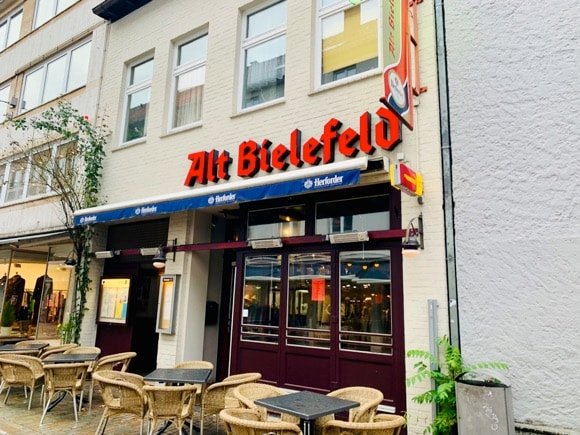
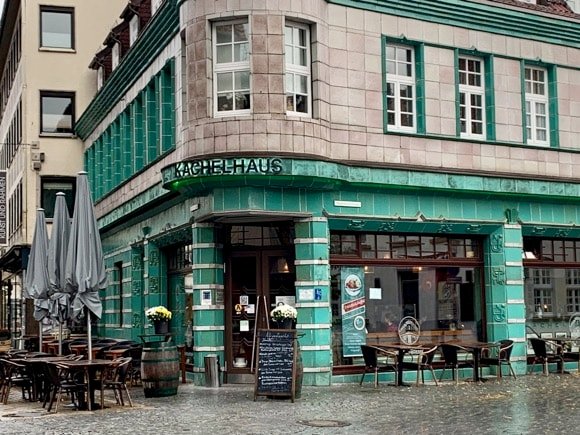
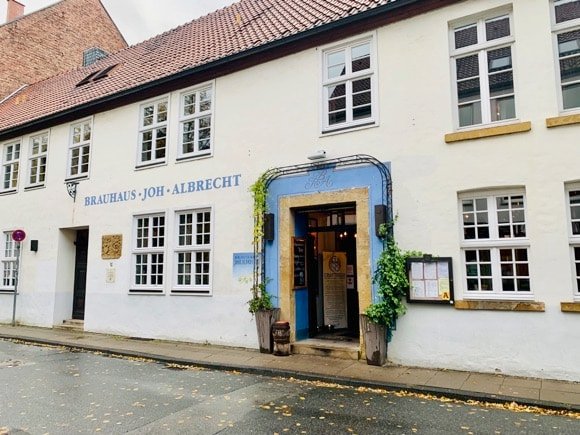
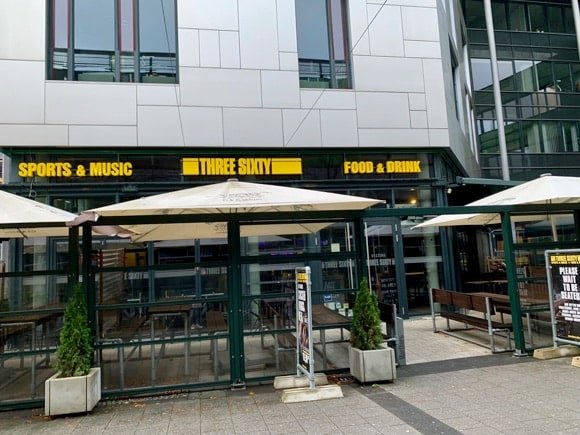
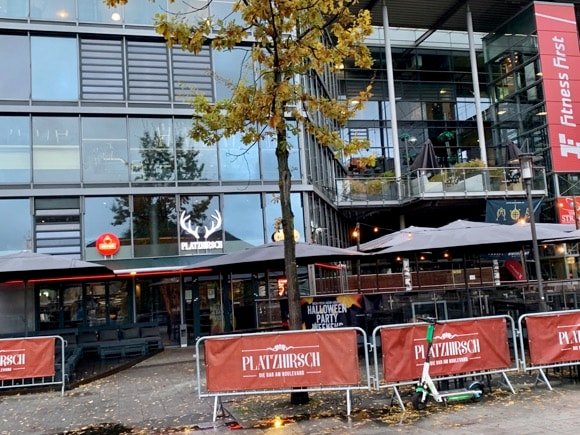
In the Boulevard Bielefeld complex by the station, and so also handy for the stadium, THREE SIXTY screens games from all top European leagues, serving pitchers of beer and classic bar food, with meal deals on wings, burgers and pizzas depending on which day you come. Open from 5pm Tue-Fri, noon Sat-Sun. Alongside, slick Platzhirsch, ‘die Bar am Boulevard’, also pours pints of Krombacher and extends its happy hours on cocktails.
Calling itself ‘die Kneipe für Füßball in Bielefeld, Alt Bielefeld near Alter Markt in town, advising you to find your seat early for Arminia games and major internationals in its intimate Bierstube. You’ll also find tables outside on Goldstraße and in a small Biergarten, while the restaurant specialises in Schnitzel and lunchtime specials. Draught beers include local Herforder Pils.
Nearby, either side of Hagenbruchstraße, Brauhaus Joh Albrecht is as traditional at is comes, its own Messing and Kupfer brews sold by the 1.5-litre pitcher and two-litre syphon, while the Kachelhaus is an architectural landmark dating back the best part of a century, its signature green tiles surrounding a pleasant pub/restaurant that’s also a great breakfast option.
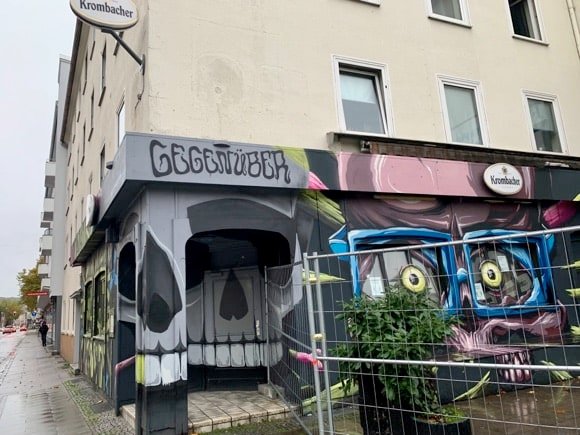
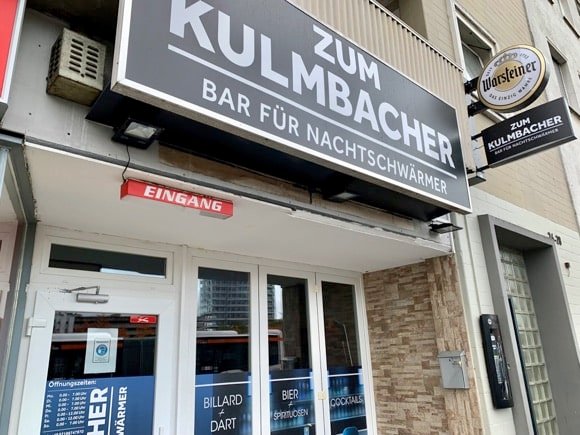
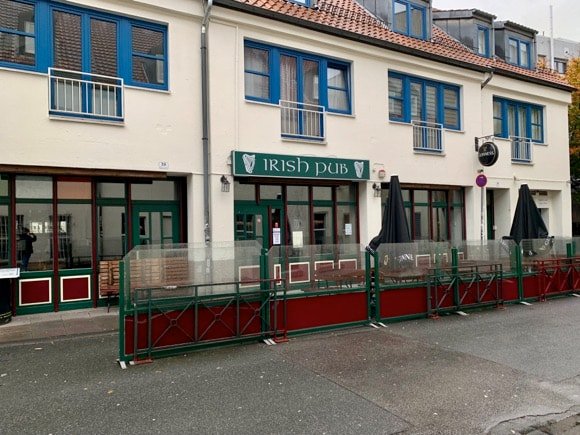
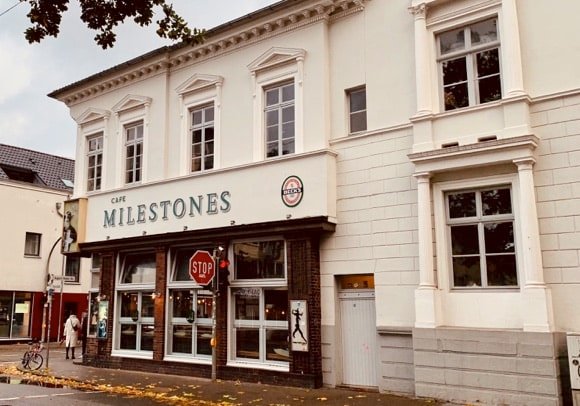
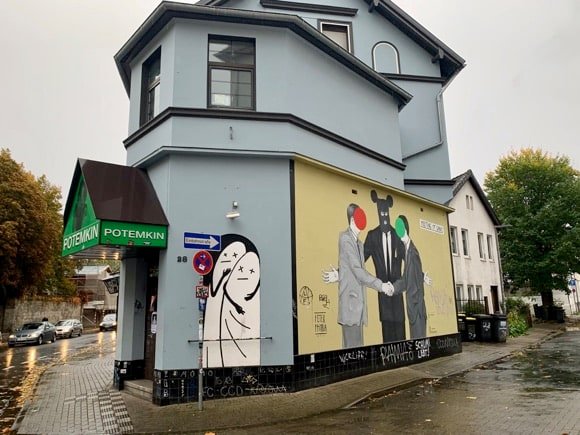
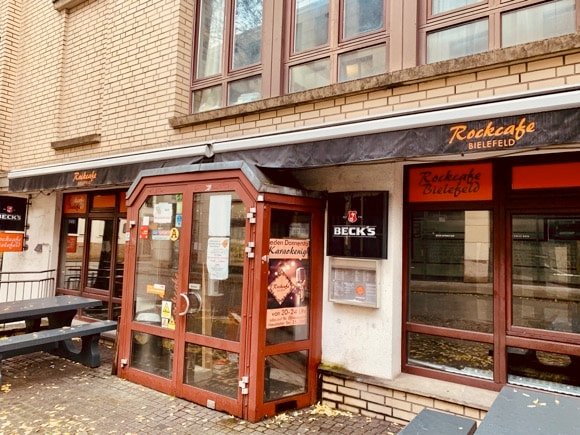
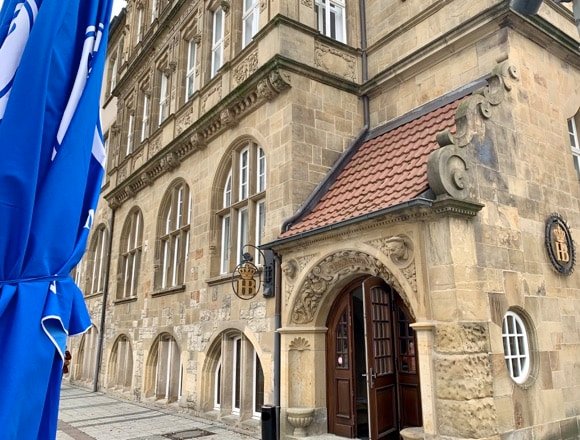
Equally historic in feel, the Bavarian-style Hofbräu am Alten Rathaus on Rathausplatz shows major games on a big screen, the namesake beer coming in original, dark and Weiße varieties. It was here, or close by, in any case, where the original founders of Arminia met to form the club in 1905.
Over on Mauerstraße, the evening-only Irish Pub Bielefeld has been the city’s main hostelry of this kind for 30 years – karaoke and quiz nights are more its thing than TV sport, plus it’s closed on Sundays, but it stocks scores of whiskeys and offers twofer cocktails.
On Neustädter Straße, you’ll find TV football and loud guitar riffs at the Rockcafe, but only after 7pm Fridays to Sundays.
A more alternative crowd heads to a late-night hub around Kesselbrink, perhaps first calling at the corner Café Milestones on August-Bebel-Straße before plunging into the all-night, cult locale Zum Kulmbacher, funky, vinyl-favouring GegenÜber with its 5am closing times next door and bohemian music spot Potëmkin.
Where to stay
The best hotels for the stadium and city centre
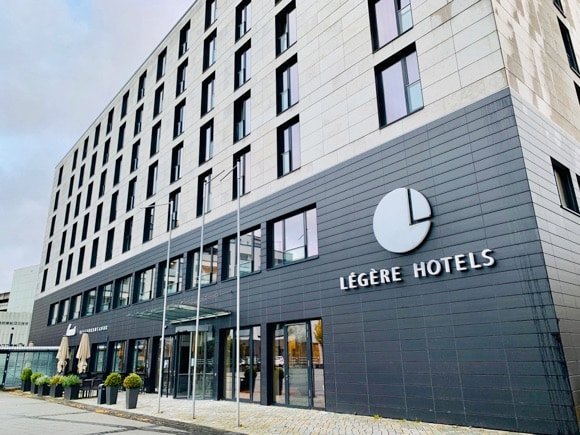
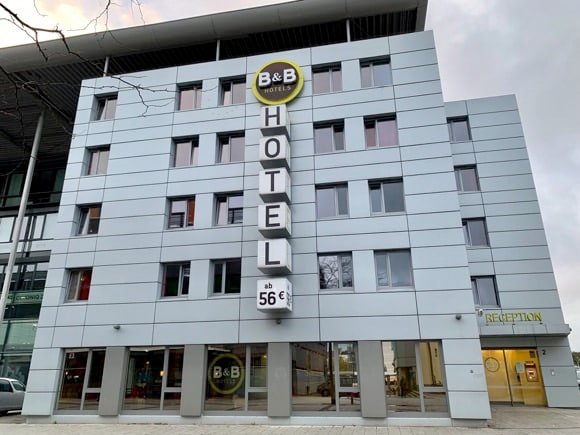
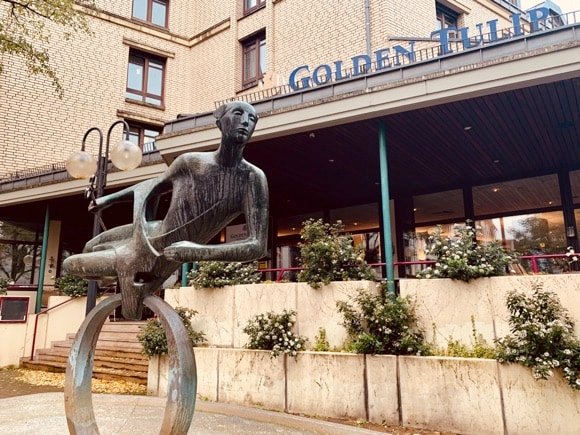
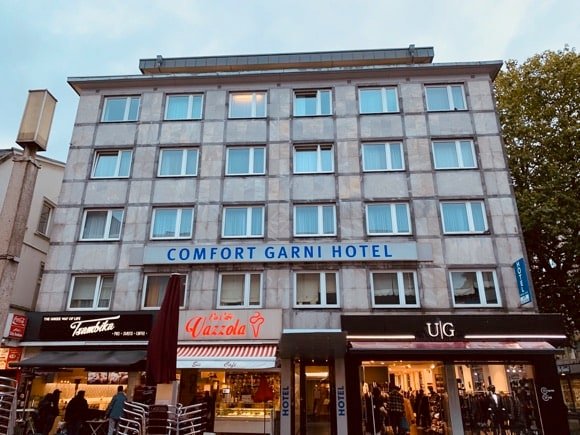
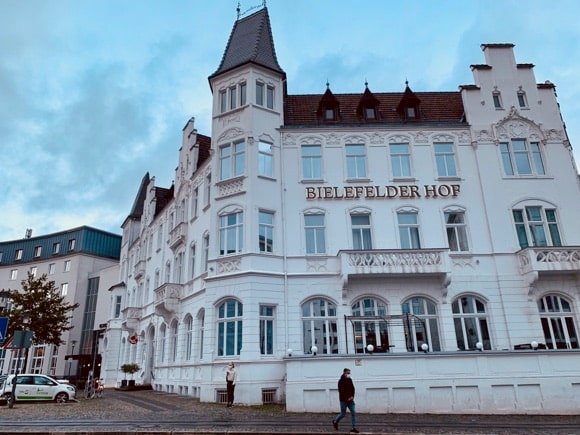
German-only Bielefeld Jetzt has tourist information and an online hotel database and booking service – also German-only.
At the station and so also convenient for the stadium, the B&B Bielefeld-City comprises 104 comfortable, mid-range rooms, with limited free parking, from this fast-growing value-focused hospitality chain originally based in Brest, France.
Close by, the Steigenberger Bielefelder Hof reopened in 2024, the best address in town, a superior four-star, business-friendly where away teams stay. Breakfast is a feast – but, then again, you’re paying top dollar.
Considerably more affordable, the mid-range Comfort Garni offers paid-for parking and later check-outs, plus a sun terrace for drinks on the first floor.
The stylish LÉGÈRE HOTEL on Neumarkt offers generous discounts for direct booking and longer stays. There’s an in-house bar, restaurant and gym. Currently undergoing a change of ownership, the Golden Tulip Bielefeld City has an excellent location on Waldhof in the city centre.






